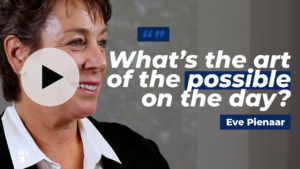Property Mediation Case Study: Right of Access Resolution
Overview
Mediator: Eve Pienaar
Sector: Property sector
Outcome: Through on-site visits, joint sessions, facilitated dialogue, and a focus on pragmatic solutions, the mediator helped the parties reach an agreement, saving time, money, and restoring neighbourly relations.
Background
A large farm holding was subdivided, leaving several properties with a single access road. One newly purchased property owner objected to the original farmer using the road, citing concerns about damage from heavy vehicles and lack of maintenance. This ignited a legal dispute, with both sides incurring significant legal fees and emotional distress.
This case study examines the successful mediation of a heated property dispute between rural neighbours. The seemingly minor issue of access rights escalated to costly legal battles, highlighting the emotional and financial toll of such conflicts.
Challenges the Mediator Encountered
Miscommunication: Lack of clear communication and understanding of each other’s needs and concerns exacerbated the conflict.
Legal Costs: Litigation was draining both parties financially and emotionally, with little progress towards resolution.
How the Mediator Resolved the Situation
The mediator, (Eve Pienaar) was brought in to facilitate communication and explore solutions outside of the adversarial legal system. The mediator visited the property to understand the physical layout and context of the dispute. A number of joint sessions allowed each party to express their concerns and perspectives openly and honestly.
Resolution
After joint sessions, the parties reached an agreement regarding access rights, vehicle usage, and road maintenance responsibilities. Mediation avoided further litigation costs, saving both parties significant sums.
The process fostered understanding and communication, leading to a more amicable relationship between neighbours.
Key Learnings
Emotions Run High: Property disputes can be highly charged, requiring a neutral facilitator who can manage emotional responses.
On-site Visits: Understanding the physical context of the dispute can be crucial for effective mediation.
Open Communication: Facilitating open and honest communication is essential for identifying common ground and exploring solutions.
Pragmatic Solutions: Mediation focuses on finding practical and workable solutions that meet the needs of both parties.
Conclusion
This case study demonstrates the effectiveness of mediation in resolving complex property disputes. By providing a neutral platform for open communication and focusing on practical solutions, mediators can help neighbours move beyond conflict and find mutually agreeable solutions. This approach can save time, money, and ultimately, restore harmonious relationships.



